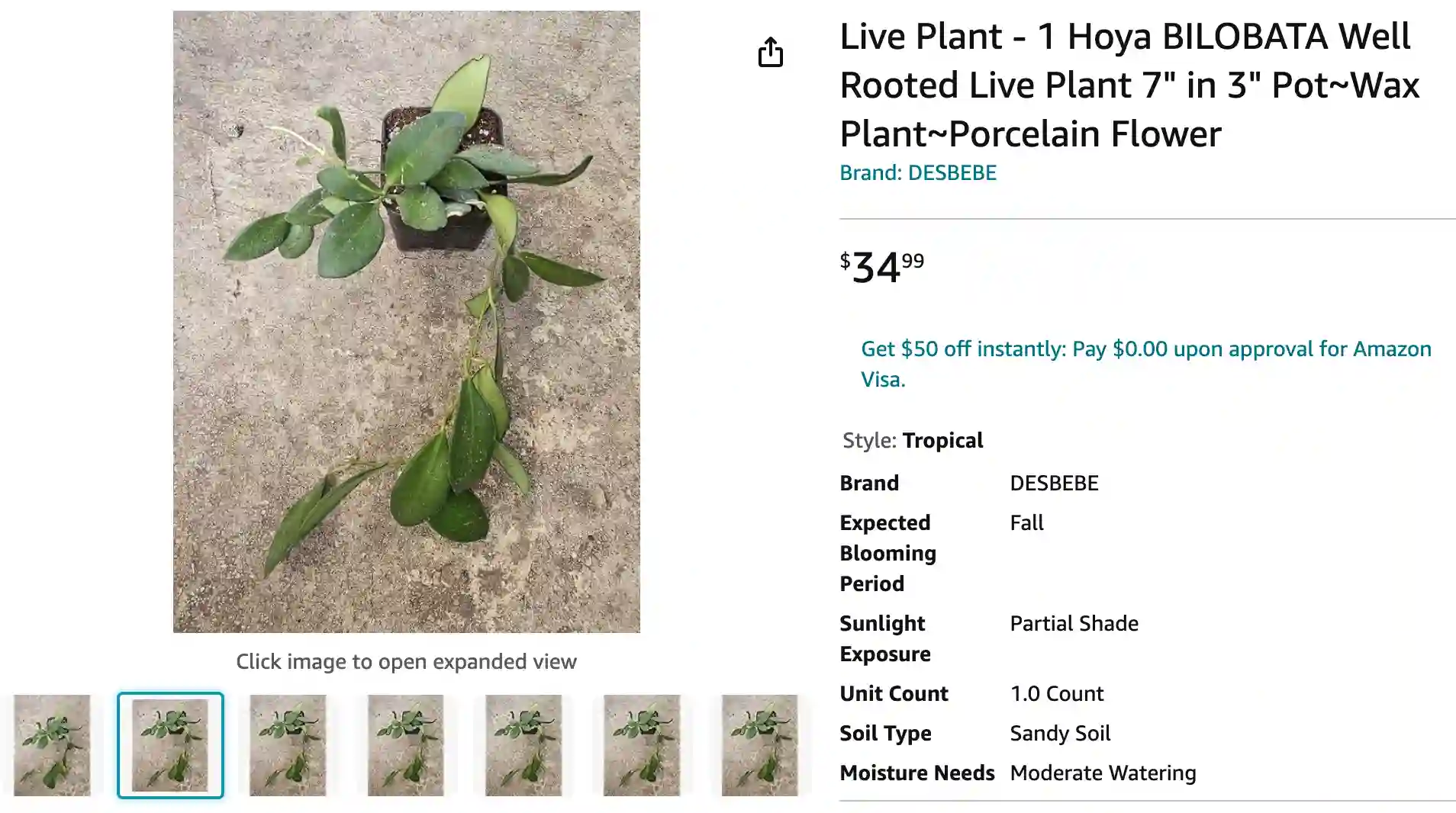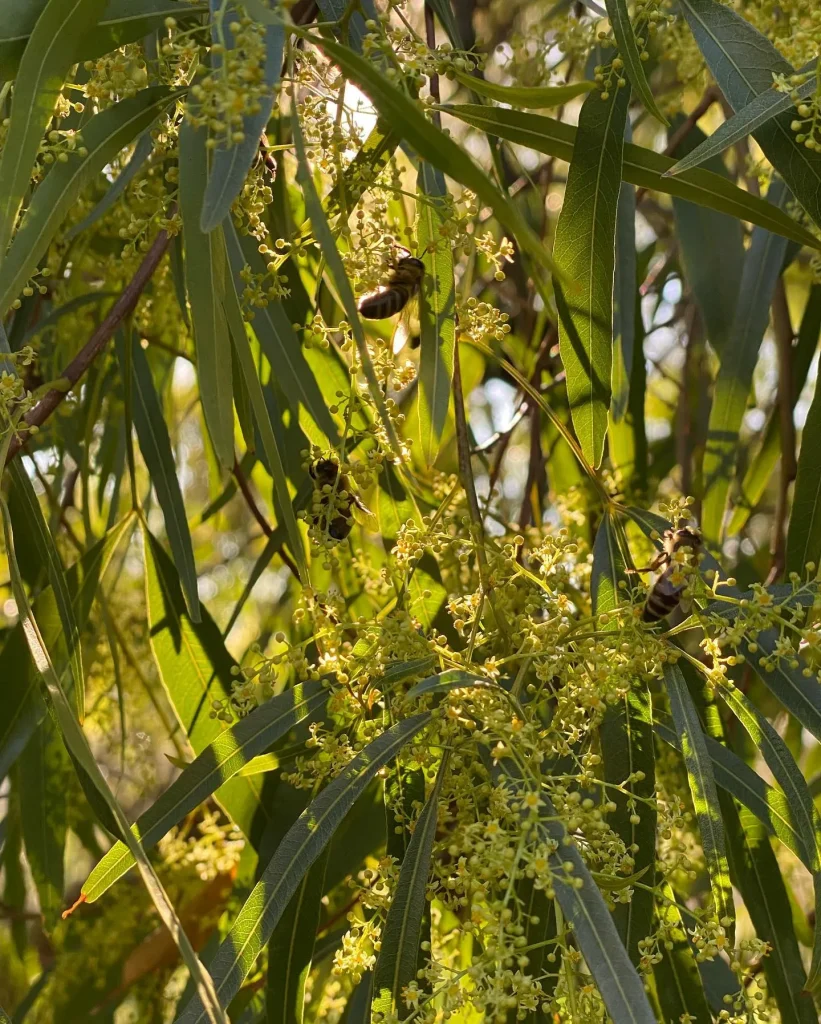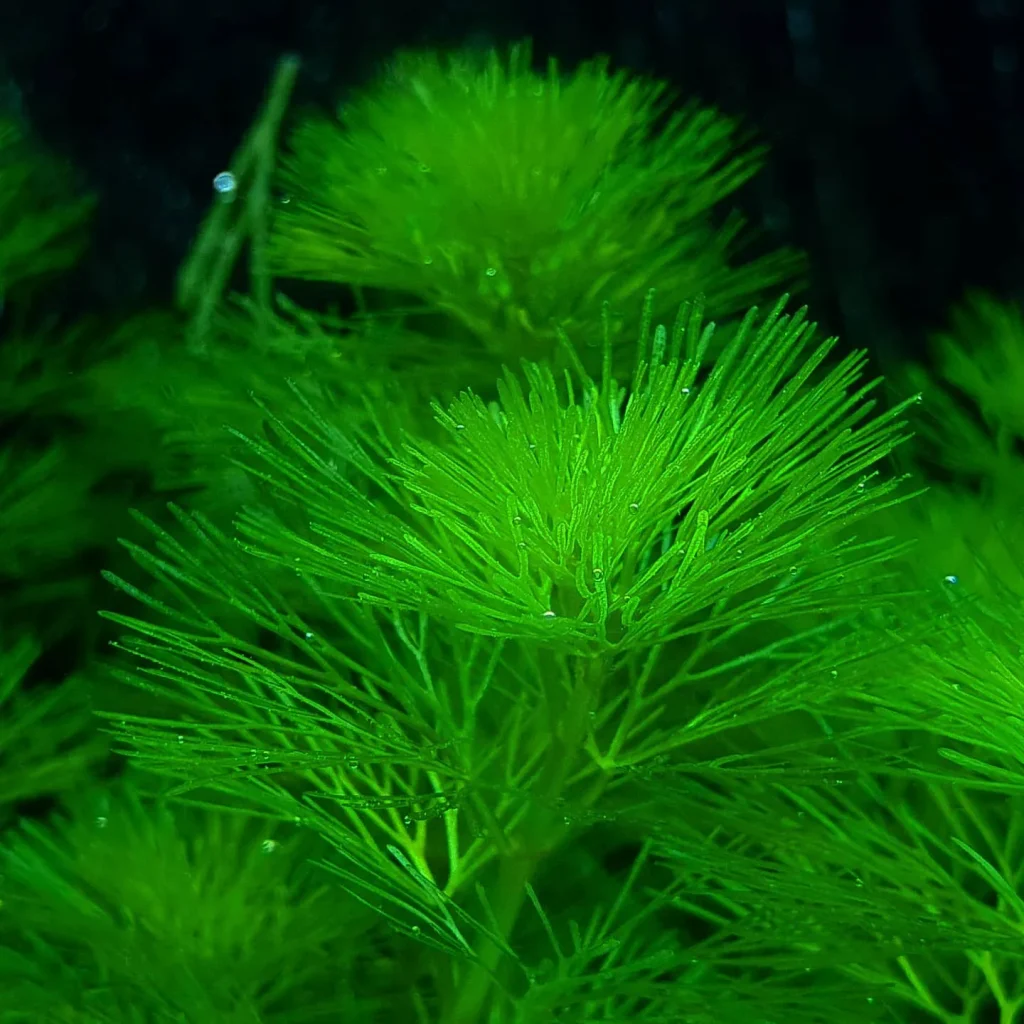
What is Hoya Bilobata?
The Hoya bilobata, also known as the Sweetheart Hoya, has captured my heart with its dainty charm. This Philippine native boasts unique olive-green foliage with a dark-colored margin, making it a standout amongst its Hoya cousins. But beyond its captivating looks, the Bilobata offers a delightful low-maintenance experience for plant enthusiasts like myself.
Hoya Bilobata vs Burtoniae
My Hoya bilobata is like a glamorous movie star. Its leaves are these stunning, glossy ovals, a deep emerald green that always seems to catch the light. They feel smooth and cool to the touch, and when it finally blooms, the star power explodes with those gorgeous pink and yellow flowers. It can be a bit fussy about watering – if I miss its sweet spot, it lets me know with a dramatic droop. But overall, it’s a real showstopper in my collection.
On the other hand, my Hoya burtoniae is more of a laid-back rockstar. The leaves are a softer green, kind of matte with a fuzzy texture that feels like velvet. They’re not as big or dramatic as the bilobata’s, but they have a charm all their own. Plus, this plant seems way more forgiving. I can forget to water it for a while, and it just shrugs it off. It hasn’t bloomed for me yet, but I hear the flowers are a cool dark red. I wouldn’t trade either one, but for pure visual impact, the bilobata takes the crown. For a chill, low-maintenance vibe, the burtoniae is my go-to.
Hoya Bilobata vs DS 70
This one’s a head-scratcher. Honestly, I can barely tell the difference between my Hoya bilobata and the DS-70. They both have those same glossy, emerald leaves, though maybe the DS-70’s are a touch smaller. They both seem to have the same watering needs and haven’t bloomed yet, so that’s no help. I’ve read online that the DS-70 has a more prominent center vein, but I need a magnifying glass to see that! Maybe with more time, some subtle differences will emerge. But for now, they’re practically plant twins in my house.
Light: Bright and Indirect, Please!
Imagine a shady porch bathed in the gentle glow of morning sunlight. That’s the perfect lighting scenario for your Hoya bilobata. Direct sun can scorch the delicate leaves, so avoid harsh afternoon rays. East-facing windows are ideal, providing the essential bright, indirect light it craves for healthy growth.
Watering: When in Doubt, Leave it Out
One of the biggest advantages of the Hoya bilobata is its forgiving nature when it comes to watering. Unlike some finicky plants, it doesn’t appreciate constantly soggy soil. Let the soil dry completely between waterings. A good rule of thumb is to stick your finger into the potting mix. If the top inch feels dry, it’s watering time.
Temperature: Keeping it Warm and Cozy
Think tropical paradise. The Hoya bilobata thrives in warm temperatures ranging from 60 to 85 degrees Fahrenheit (15 to 29 degrees Celsius). Avoid letting it experience chills below 55 degrees Fahrenheit (12 degrees Celsius). This warmth preference makes it a perfect indoor companion, especially in heated homes during the winter months.
Humidity: The Higher, the Merrier
While the Hoya bilobata can tolerate average household humidity levels, it truly shines in a more humid environment. If your home leans towards the dry side, consider using a pebble tray or humidifier to increase the moisture content around the plant. This extra TLC will encourage lusher growth and potentially even more blooms.
Soil: Drainage is Key
A well-draining potting mix is essential for a happy Hoya bilobata. Opt for a succulent or cactus mix, or create your own by combining regular potting soil with perlite or orchid bark. This airy concoction allows excess water to drain away freely, preventing root rot, a common enemy of Hoyas.
Feeding: A Light Feast
The Hoya bilobata isn’t a heavy feeder. During its active growing season (spring and summer), a monthly dose of a balanced, diluted liquid fertilizer will suffice. In the winter months, you can skip fertilizing altogether. Remember, less is often more when it comes to feeding this delicate plant.
Common Issues and How to Fix Them
Leaf Curl: This can be caused by underwatering, so check your watering schedule and adjust if needed.
Mealybugs: These tiny white pests can suck the sap out of your plant. Isolate the affected Hoya and treat it with insecticidal soap or neem oil.
Slow Growth: This could be due to insufficient light, lack of nutrients, or the plant being rootbound. Ensure proper lighting, fertilize during the growing season, and repot if the roots have filled the container.
Conclusion: A Rewarding Companion for Plant Enthusiasts
The Hoya bilobata is a charming and low-maintenance addition to any plant collection. With its delicate foliage and delightful blooms, it offers a touch of the tropics to your indoor haven. Just remember to provide it with bright, indirect light, well-draining soil, and the occasional watering, and this little wonder will reward you with its captivating presence for years to come.



